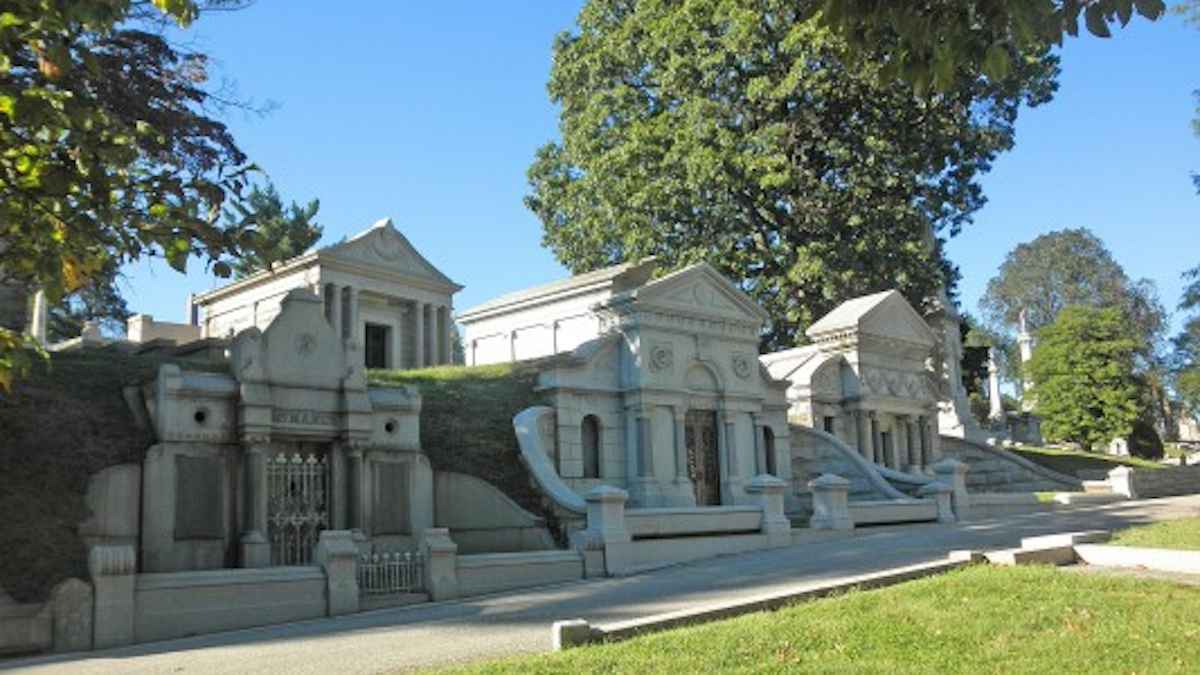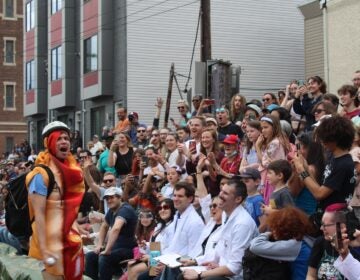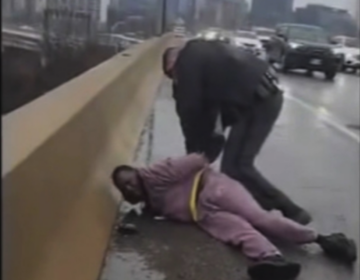Plans underway to build a new visitors center at Laurel Hill

(NewsWorks file photo)
Laurel Hill Cemetery is quietly exploring big news for a sprawling 19th-century landmark that serves the living and the dead alike, said executive director Pete Hoskins.
“We’re in an extremely quiet phase at this moment with our own dreams that we’re just beginning to share,” he added.
Last fall, the nonprofit won a competitive design grant from Philly’s Community Design Collaborative, which helps organizations looking toward big physical changes develop the concepts they need to seek funding and finalized designs.
The focus of this “phase one” study is relatively simple, but it has big implications for Laurel Hill’s future. Its volume of visitors and programming has outstripped the capabilities of its original gatehouse buildings, dating from the 1830s, and the cemetery needs a new visitors’ center. The purpose of this study was to determine whether a new visitors’ center could fit on the cemetery grounds, or if the site Laurel Hill owns on the other side of Ridge Avenue would be best.
“From that final report we can finalize ourselves, at the staff and board level, that this is the site we would agree on,” Hoskins said. At this point, it looks likely that Laurel Hill will be significantly expanding its physical footprint across the street, while preserving its burial grounds for current uses and programming.
Laurel Hill, which now encompasses about 78 acres housing about 70,000 individual burial sites, according to Hoskins, has a Cemetery Company Board that has been managing the urban oasis overlooking the river since 1831. In 1978, the Friends of Laurel Hill Cemetery launched, which became the 501 (c) 3 nonprofit that now works in tandem with the Company Board.
In 1998, the site became a national historic landmark, though it had no formal program staff — just a few “dedicated board member guides,” Hoskins explained. The historic site began to acquire staff in 2004, and “began to build a really first-rate nationally prominent program for historic cemeteries.”
With close to 100 different programs per year, including its popular cemetery tours and museum exhibits in its original buildings, Fringe Festival shows, arts and crafts, movie screenings, and more, plus about 500 members that the organization now hopes to swell to 1000, it’s time to look to the future.
“We opened the new entrance to pedestrians and cyclists on Kelly Drive just [last] fall,” Hoskins adds. “With that, we’re now hitting a new critical mass of programming and activity here.”
The site’s current 19th-century buildings can’t fit more than about 20 people in any given room, the director says—– a problem for adequate interpretive space, events, and tour assembly, especially in inclement weather.
They need “a true visitors’ center,” Hoskins said. “We purchased property across the street nearly a decade ago with the idea that we could be at a place where we could do that.” Currently, Laurel Hill uses it for visitors’ parking and leases the building itself to a yogurt distributor. If the site hosts the cemetery’s new visitors’ center, it’s possible that the existing building could be demolished in favor of a new one offering a range of services and strengthened community partnerships.
While the current Collaborative grant is about location, not design or programming, Laurel Hill is beginning to formulate future offerings of a new visitors’ center. These could include a welcoming place for tours to gather, perhaps a theater space for an introductory documentary, a lecture area, room for funeral services (contrary to popular belief, interments are ongoing at Laurel Hill, particularly as cremation gains popularity in Philadelphia), more accessible housing for the site’s archives (for genealogical and historic researchers), and general community meeting space.
Hoskins said Laurel Hill staffers are beginning to imagine the interpretive possibilities of a new space like this, including, perhaps, an exhibit that could simulate one of the cemetery’s many underground burial sites, which are off-limits to the general public.
“We’d like to have people feel like they can see what we used to call the underground museum,” Hoskins said, explaining that a lot of people are “fascinated” by what’s underneath Laurel Hill: many large underground crypts. Hoskins estimates that about 15 percent of Laurel Hill’s deceased denizens are buried there.
Hoskins called the Collaborative “a fabulous program, because most of us small non-profits have a hard time with that chicken and egg problem…You can’t set up a fundraising program if you can’t describe what you’re doing.”
Next, Hoskins hopes to pursue a second-phase grant from the Collaborative that would help Laurel Hill delve into programming and design, after the visitors’ center site is finalized, and also determine the best uses for the existing building. “We might be able to use this space in a fashion much more harmonious with its historic design,” he said.
Once the true design process is underway, it’ll be “an opportunity to incorporate a much broader set of stakeholders,” he added. Laurel Hill is already an active part of communities in East Falls, Strawberry Mansion, and Allegheny, and maintains heavy engagement with Fairmount Park (Hoskins is also a founder of the East Fairmount Park Alliance).
“A project like this is years in the making, not days or months,” he finished. But Laurel Hill is looking forward to the expansion, and the design and fundraising challenges around the corner.
WHYY is your source for fact-based, in-depth journalism and information. As a nonprofit organization, we rely on financial support from readers like you. Please give today.




